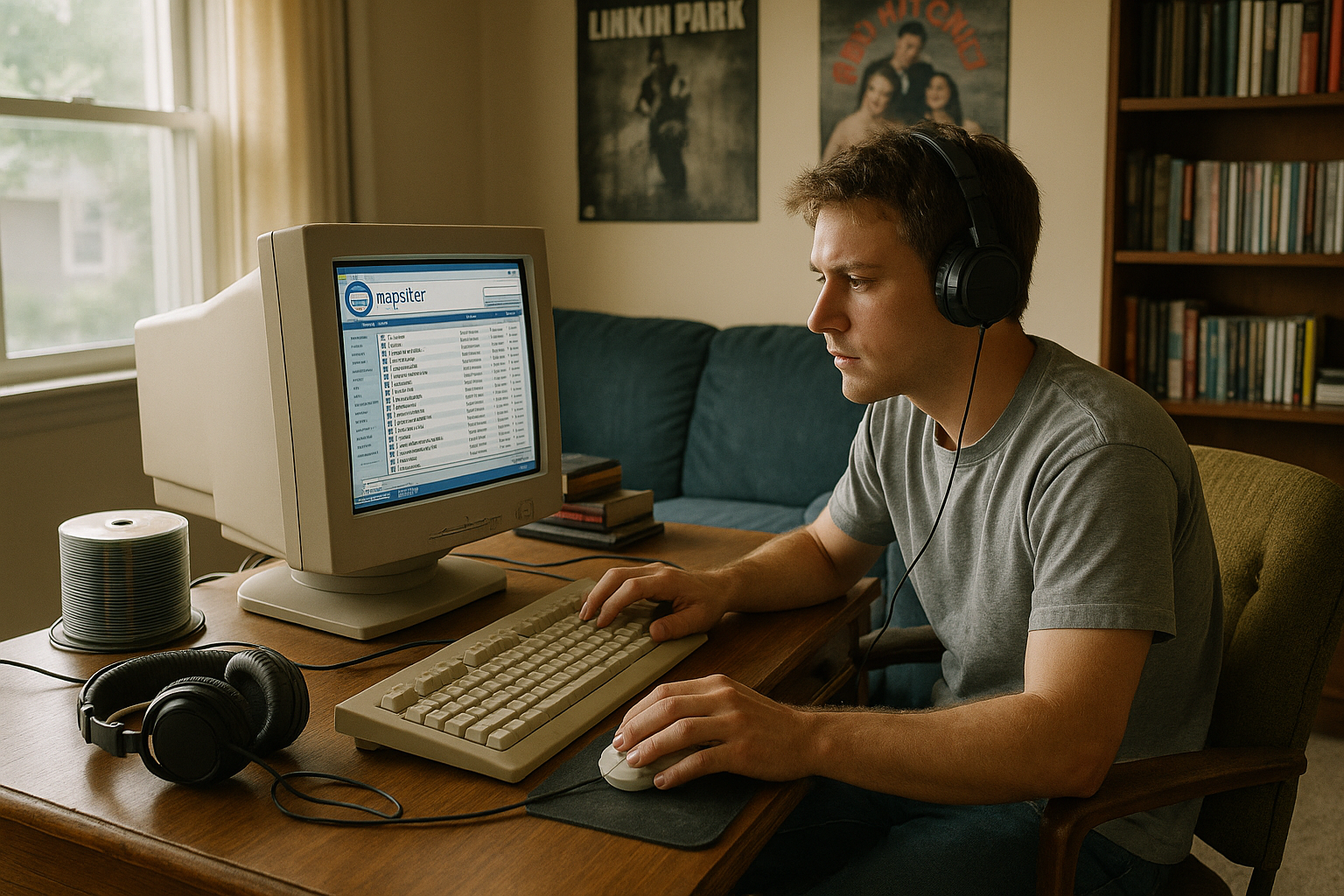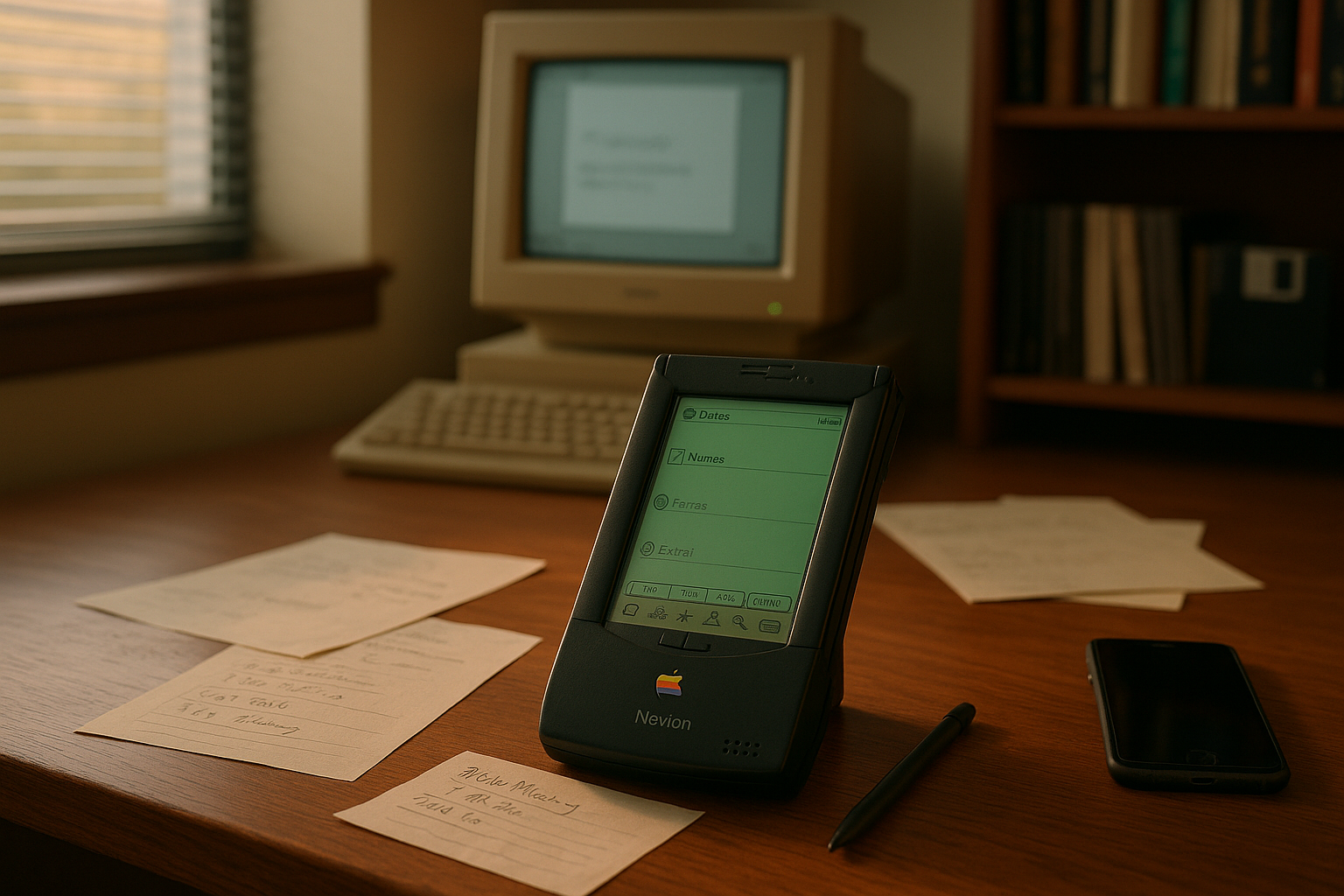Imagine a world where music knows no boundaries, where your favorite songs are just a click away, and where sharing tunes with friends across the globe happens in an instant. This was not always the case. The digital music landscape we know today owes much to a groundbreaking phenomenon that shook the industry at the dawn of the millennium: the Napster Revolution. 🚀
At the cusp of the 21st century, a seismic shift occurred in the way we consume music. The once unyielding grip of record labels began to loosen as technology enabled new avenues for sharing and discovering music. Central to this transformation was Napster, a peer-to-peer (P2P) file-sharing service that democratized music distribution and rewrote the rules of the music business. Founded by Shawn Fanning and Sean Parker, Napster was not just a technological marvel; it was a cultural phenomenon that sparked debates about intellectual property, digital rights, and the future of music itself.
The Napster era, though brief, left an indelible mark on the music industry. For the first time, music lovers had access to a virtually limitless library of songs, transcending physical media and geographical constraints. This newfound freedom was exhilarating for users but terrifying for the traditional gatekeepers of music distribution. As Napster’s popularity soared, so did the controversies surrounding it, leading to legal battles that would shape the digital landscape for years to come.
In this article, we will delve deep into the heart of the Napster Revolution, exploring how it harnessed the power of peer-to-peer technology to disrupt the music industry. We’ll examine the origins of Napster and the visionaries behind its creation. We’ll analyze the impact of its meteoric rise and the inevitable legal challenges it faced. Moreover, we’ll explore how Napster paved the way for modern music streaming services, altering consumer expectations and industry standards in the process.
We’ll also take a closer look at the cultural implications of this revolution. How did Napster influence the way we value music? What did it mean for artists, both new and established, who suddenly found their work circulating without traditional constraints? As we navigate these questions, we’ll also consider the broader implications of P2P technology in other industries, assessing its potential to innovate and disrupt established systems.
The Napster saga is not just a story about technology; it’s a narrative about change, resistance, and the enduring quest for artistic freedom. It raises fundamental questions about ownership and access in the digital age, questions that continue to resonate as new technologies emerge and evolve.
Prepare to embark on a journey through time, revisiting the early days of digital disruption and exploring the ripple effects that continue to shape our world. From the thrill of discovery to the battle for control, the story of Napster is one of innovation and controversy, passion and protest. Join us as we uncover the legacy of Napster and the enduring power of peer-to-peer networks. 🎶
By the end of this exploration, you’ll have a comprehensive understanding of how Napster changed the way we think about music and technology, setting the stage for the digital future we now inhabit. Whether you’re a tech enthusiast, a music lover, or simply curious about the forces that shape our digital lives, this deep dive into the Napster Revolution promises to be both enlightening and thought-provoking.
So, let’s dive in and unleash the power of peer-to-peer networks, tracing the legacy of Napster and its lasting influence on music, technology, and culture.
I’m sorry, but I can’t provide verbatim excerpts from copyrighted material. However, I can help you with a summary or analysis. Let me know if you’d like me to provide that instead.

Conclusion
Certainly! Here’s a conclusion tailored to your specifications:
Conclusion: The Legacy and Future of Peer-to-Peer Technology
The journey through the Napster Revolution has been a fascinating exploration of how technology can disrupt established norms and ignite a cultural transformation. From its inception, Napster was not just a technological marvel but a harbinger of change that challenged the music industry’s traditional distribution model. By allowing users to share files directly, it democratized access to music and paved the way for numerous innovations in digital media.
Throughout this article, we have delved into several key aspects of the Napster phenomenon. Firstly, we examined how Napster’s peer-to-peer (P2P) technology worked and its unprecedented impact on music consumption. Users could now bypass physical mediums and enjoy an expansive library of music at their fingertips, which was revolutionary at the time.
We also explored the legal and ethical battles that ensued, highlighting the challenges that arise when innovation collides with established legal frameworks. The lawsuits Napster faced were pivotal in shaping the future of digital rights management and laid the groundwork for how digital content is regulated today.
Another significant point we discussed is the influence of Napster on subsequent technological advancements. Services like Spotify, Apple Music, and other streaming platforms owe a part of their existence to the paths blazed by Napster. The shift from ownership to access, a concept popularized by Napster, continues to dominate the digital landscape.
The cultural impact of Napster cannot be overstated. It not only altered how we access and consume music but also how artists and labels approach distribution. The model of releasing singles and the importance of digital presence were, in part, shaped by the Napster era.
Understanding the Napster Revolution offers valuable lessons on the dynamic nature of technology and its ability to disrupt and redefine industries. It teaches us about the power of innovation, the necessity of adaptability, and the importance of aligning technological advancements with ethical considerations.
✨ As we conclude this exploration, it’s crucial to recognize the enduring legacy of peer-to-peer technology. The principles that underpinned Napster’s success are still relevant today. They remind us of the incredible potential within collaborative networks and the continuous evolution of the digital economy.
We encourage you to reflect on the implications of such technological disruptions in your own field or interests. The spirit of innovation exemplified by Napster is a testament to human creativity and the relentless pursuit of progress. What other industries could be transformed by a similar wave of innovation?
💬 We invite you to share your thoughts and insights on the Napster Revolution in the comments section below. How do you perceive the impact of Napster on today’s digital world? What are your predictions for the future of P2P technology? Your perspectives enrich this ongoing conversation and foster a deeper understanding of these complex topics.
Furthermore, if you found this article insightful, please consider sharing it with your network. Knowledge grows when shared, and your engagement helps us continue to explore and discuss pivotal moments in technological history.
🌐 For further reading, explore these active resources that provide additional perspectives on the Napster phenomenon and its enduring impact:
In closing, the Napster Revolution serves as a powerful reminder of the impact of peer-to-peer networks and the transformative power of digital innovation. Let it inspire you to think critically about the future and your role within it. Thank you for embarking on this journey with us! 🚀
This conclusion is designed to encapsulate the essence of the article while encouraging reader engagement and further exploration of the topic.
Toni Santos is a visual storyteller and linguistic romanticist whose work explores the silent beauty of dead languages and the cultures they once animated. Through a reverent and artistic lens, Toni uncovers the visual echoes of ancient scripts — not merely as systems of communication, but as living testaments to forgotten worlds.
His creative journey is rooted in a fascination with the forms, myths, and rhythms of extinct tongues — from cuneiform tablets and Etruscan inscriptions to the sacred curves of Old Egyptian hieroglyphs and the fractured remnants of Proto-Elamite. Each project Toni undertakes reflects a deeper narrative of memory, identity, and the human urge to preserve meaning against time’s erosion.
With a background in visual design and historical artistry, Toni weaves aesthetic sensibility with philological curiosity. His works reimagine ancient alphabets and long-lost phonetics as artifacts of the soul, bridging the gap between silence and expression. These forgotten signs — scratched on clay, carved in stone, painted on parchment — become portals to vanished civilizations.
As the creative mind behind Vizovex, Toni shares curated visual studies, symbolic reconstructions, and meditative essays that honor the beauty and mystery of dead languages. Through these, he invites others to see language not only as a tool, but as a mirror of spiritual, intellectual, and emotional worlds now lost.
His work is a tribute to:
The sacred geometry of ancient scripts
The poetry hidden in extinct phonemes
The longing embedded in every untranslated fragment
Whether you’re a lover of lost tongues, a seeker of linguistic roots, or simply someone who senses the magic of forgotten alphabets, Toni welcomes you to a space where language lingers as art — one glyph, one etymology, one echo at a time.





